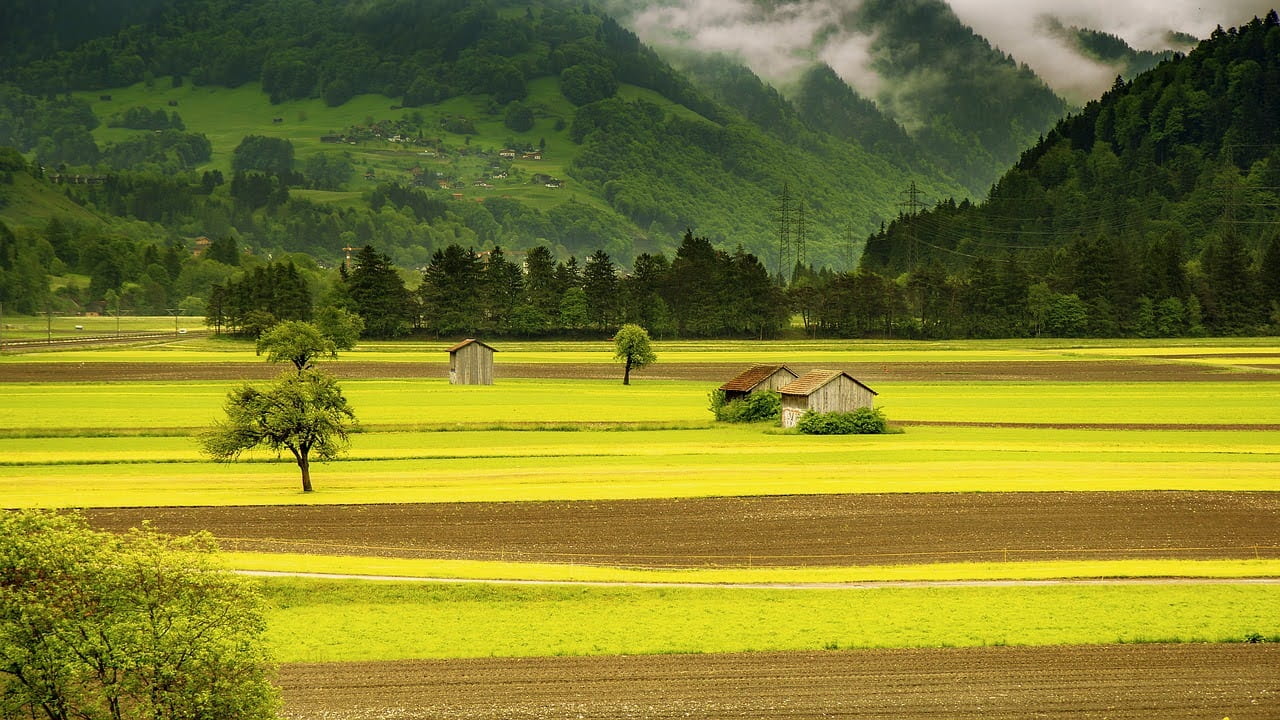Hunger and Agriculture
Introduction
To this day one of the biggest issues in developing countries is the continuous rise of hunger, food insecurity, and malnutrition. Most people are under the assumption that with the increase of trade, food production, and technological advancement these problems would slowly decrease over the years. Instead, 2019 marked the third consecutive year that world hunger had kept rising after a one year decline (United Nations). There are also 821 million people in the world who are undernourished and, in 2017, 770 million faced food insecurity (United Nations). For this reason, the second United Nations Sustainable Development Goal is to “end hunger, achieve food security and improved nutrition and promote sustainable agriculture.” Without efforts to bring these numbers to a halt, they will continue to increase along with the growing population, worsening the conditions over time. The economic and technological conditions of low-income countries create environments where their citizens are slowly sucked into a poverty trap that leaves them in these unforeseen circumstances. To dissolve this food fight, new investments must be made supporting small scale and family farming in developing countries, allowing them to gain knowledge and resources surrounding sustainable agriculture.
Factors Leading to Hunger and Food Insecurity
First, we must define the difference between hunger and food insecurity. When talking about hunger we are referring to “a personal, physical sensation of discomfort, while food insecurity refers to a lack of available financial resources for food at the household level” (Hunger and Health). People in developing countries face both of these issues because of factors they can and cannot control. Due to a lack of economic resources families become stuck in what is known as a poverty trap- where because they are poor and cannot afford nutrient-dense food it leads them to be undernourished, which in turn makes it difficult for them to find work, leaving them without any money to spend on food (Concern Worldwide). This cycle becomes never-ending and affects more and more people once they reach poverty. Other factors include food shortages caused by the previous year’s harvest not being sufficient to last until the new season, environmental conditions like droughts that lead to crop failures, food waste, population growth, and gender inequality (Concern Worldwide). In one way or another one or more of these factors affect families in poverty, and by opening the door to a few new resources and options these families’ lives could change completely.
What Is Sustainable Agriculture?
The definition of sustainable agriculture will greatly depend on where you are in the world. In Sustainable Agriculture in Developing Countries: Challenges and U.S. Role, Hari Eswran discusses how in developed countries, “the concept of sustainable agriculture blends basic economic concerns, conservation, and maintenance or improvement of the resource base.” This view stems from environmental and ecological concerns and it directly focuses on the ecological integrity of farming practices. In these countries “sustainable agriculture is a management system for renewable natural resources that provides food, income, and livelihood for present and future generations while maintaining or improving the economic productivity and ecosystem services of these resources” (Eswaran).
The meaning of sustainable agriculture shifts in developing countries from environmental issues to issues surrounding crop yield, crop diversity, and farmer’s income. The implementation of these agricultural practices leads to communities being able to sustain themselves due to the increase in available food. Because of the more efficient farming techniques farmers will be able to create an abundant food supply to feed their families and to profit from in markets. A few of these practices include focusing on efficient cropping systems, pest-control methods, and creating potable water supplies. The main focus is on pursuing “agricultural progress that can sustain their population and their country” (Eswaran).
In a more general sense, the world must shift their mindset to think of sustainable agriculture as being “an action program that addresses the needs of farmers in context of their environment” (Eswaran). Sustainable practices will be unique to each individual, it is just finding what actions they can take to improve their situation. These farming practices may also change depending on the size of the operation, “ranging from a single farmer’s field, a farm, or a watershed to an ecosystem, a country, a continent, or the Earth as a whole” (Eswaran). The important takeaway of any sustainable agriculture practice is that it is going to solve the issues within reach.
How Sustainable Agriculture Alleviates Hunger
There can be a reduction in the number of people who go to sleep hungry every night through sustainable practices that promote an increase in food production and that can be sustained for generations. These agricultural practices include introducing drought-resistant or high yielding seeds, cheaper and less labor-intensive farming techniques, including more female farmers, introducing insurance to promote risk-seeking behavior, and in many cases just informing farmers about new concepts. By introducing new types of seeds that are not only suitable for dry environments but will produce more, the amount of available food will increase and the percentage of crop failure may decrease. Informing the farmers about new techniques can also make a big difference since they may still be farming with less efficient techniques. If more women farmers were included in the field then “the number of hungry in the world could be reduced by up to 150 million” (Concern Worldwide). This allows for a greater population to be producing food and a chance for more variety. By allowing insurance to be available, it would give farmers the courage to take risks growing new crops knowing their family will not starve if the crop fails and they have a bad season. This branching out opens new possibilities and encourages other farmers to try new techniques when seeing how well their neighbors are doing.
Sustainable agricultural practices are options that can make a difference, but the fact is without intervention people in developing countries may never have access to these opportunities. There has to be more companies who are willing to invest in farmers in developing countries to teach them these particular techniques and give them the opportunity to help not just families but communities as a whole. Another aspect that needs improving is connecting farmers who have mastered these techniques and increased their output to larger trade markets. This will allow produce not to go to waste and also increase the diversity and availability of certain produce in other areas around the world, expanding resources to other communities outside of immediate reach.
By giving individuals the resources they need to be able to grow enough food for their families, it will slowly grow into reducing community and state hunger by first eliminating household starvation. These farming practices embrace “the environmental, economic, and social conditions that challenge food security” (Guenette). They aim to break the systematic barriers that are built through poverty traps and help people satisfy their hunger so they are able to find jobs and pursue higher income. For local economies to grow, the needs of the people must first be met.
Factors Preventing Sustainable Practices
For sustainable agriculture to be the end-all solution, one fact must be dealt with: these resources must be introduced and be available to begin with. Most people in developing countries will not have any knowledge about any of these practices if they are not told about them by others in the community or by organizations that specifically promote them. The country’s government and outside organizations have to invest in these communities to begin the transformation. Without outside help, it is even harder to create any profit from farming when families are unable to feed themselves to begin with.
Some farmers may be cautious to switch to a different seed if they are unsure about how it will do the following season, because if it fails they have no food or money to survive, worsening their hunger conditions. The lack of insurance to incentivise farmers to take risks creates a risk-averse community that will never progress. This causes food production to only remain constant or decrease when there is a bad season and crops fail, leaving close to no room for growth.
Other factors that affect the successful implementation of sustainable agriculture include: how manageable are the practices in certain areas, is there the necessary physical resources to apply the techniques, and will it be socially acceptable and how will you stand out in the community (Eswaran). These are only a few of the many barriers that prevent many countries from advancing sustainable agriculture. But by showing countries that these barriers can be overcome, the boundaries for growth can be pushed farther out.
Conclusion
In developing countries small scale and family farmers “make up 40 to 85 perfect of food producers,” but there are still millions of children that are left malnutritioned and hungry (United Nations). These farmers are an abundant source to provide food for the hungry but under the current conditions are left without the ability too. Challenging current economic and social conditions by introducing sustainable agriculture resources can lead to new developments economically as people’s basic needs will first be met. World hunger can be alleviated through sustainable farming but there has to be some form of intervention to give farmers the resources to do so in the first place. By helping others with the necessary materials to expand food production for themselves and their community, it will lead to an overall increase in food worldwide, decreasing the number of people left hungry every day.
If you’re ever looking to fight food insecurity first hand do not forget to check out the Food Recovery Network (FRN) organization on campus! Multiple nights a week they collect the leftover food from the Cafe and pass it out in different locations around San Francisco. Not only does this organization do an amazing job at preventing food waste but they also provide meals to many individuals who may not have the means to attain it on their own. So make sure to get involved with FRN in the fall and help alleviate local food insecurity in the city!
Works Cited
“10 Causes of World Hunger: Concern Worldwide U.S.” Concern Worldwide, www.concernusa.org/story/top-causes-world-hunger/.
Elliott, Kimberly Ann. “Food Security in Developing Countries: Is There a Role for the WTO?” Center For Global Development, 5 May 2015, www.cgdev.org/publication/food-security-developing-countries-there-role-wto.
Eswaran, H., et al. “Sustainable Agriculture in Developing Countries: Constraints, Challenges, and Choices.” Technologies for Sustainable Agriculture in the Tropics ASA Special Publications, 2015, pp. 7–24., doi:10.2134/asaspecpub56.c2.
“Goal 2 .:. Sustainable Development Knowledge Platform.” United Nations, United Nations, sustainabledevelopment.un.org/sdg2.
Guenette, Paul. “Sustainable Agriculture Is the Key to Ending Hunger.” Impakter, 9 Oct. 2017, impakter.com/sustainable-agriculture-key-ending-hunger/.
“What Is Food Insecurity in America?” Hunger and Health, hungerandhealth.feedingamerica.org/understand-food-insecurity/.


